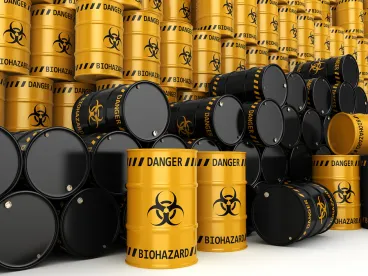The Toxics in Packaging Clearinghouse (TPCH) revised its Model Toxics in Packaging Legislation in February 2021. The revised model legislation includes per- and polyfluoroalkyl substances (PFAS) and phthalates as regulated chemicals, and establishes new processes for identifying additional packaging chemicals of high concern. The model legislation has no legal effect, but the prior version of the model legislation was enacted – in some form – in 19 states.
By way of background, the TPCH was created by the Coalition of Northeastern Governors (CONEG) to promote the Model Toxics in Packaging Legislation. Prior to the recent update, the model legislation prohibited the sale or distribution of packages and packaging components to which lead, cadmium, mercury, or hexavalent chromium have been intentionally introduced at more than an incidental presence. The model legislation limits the sum of lead, cadmium, mercury, and hexavalent chromium that is incidentally present in packages and packaging components to 100 parts per million (ppm) by weight.
In 2016, members of the TPCH began discussing the possibility of expanding the list of substances regulated under the model legislation and developing criteria for identifying new packaging chemicals that should be regulated. In June 2020, the TPHC introduced a draft update to the model legislation that, among other things, added PFAS and phthalates as regulated chemicals. In responding to the public’s comments on the draft revised model legislation, the TPCH noted that it had looked to the recent legislative changes in the State of Maine when adding to the model legislation a means of identifying other packaging chemicals of high concern. (For more information see, Maine Identifies Food Contact Chemicals of High Concern.)
The revised model legislation prohibits manufacturers, suppliers, and distributors from offering for sale or promotional purposes packages or packaging components to which phthalates have been intentionally added, subject to a limit on the incidental presence of phthalates of 100 ppm. The model legislation also prohibits the sale or distribution of a package or packaging component to which PFAS has been intentionally introduced. Even more stringent than the phthalate standard, PFAS must be non-detectable in the package or packaging component. The revised model legislation also includes that substitute materials for the substances regulated by the model legislation may not be used “in a quantity or manner that creates a hazard as great or greater than the hazard created by the chemical regulated by this Act.”
The revised model legislation establishes new criteria for identifying additional packaging chemicals of high concern, including credible scientific evidence that the chemical is the following:
-
A carcinogen, a reproductive or developmental toxicant, or an endocrine disruptor;
-
Persistent, bioaccumulative, and toxic (PBT), or very persistent and very bioaccumulative (vPvB), persistent mobile and toxic (PTM), or very persistent and very mobile (vPvM).
The chemical must also meet one of more of the following additional criteria:
-
It has been found through biomonitoring studies to be present in human bodily tissues or fluids;
-
It has been found through sampling and analysis to be present in packaging;
-
It has been added to or is present in a package;
Now that the revised model legislation has been finalized, it will be at the discretion of each state whether to adopt the revised model legislation through their own legislation initiatives.



 />i
/>i

